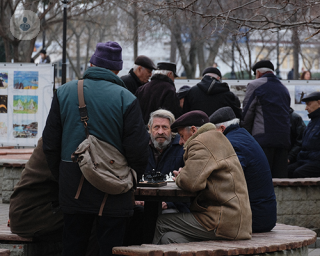Brachytherapy for prostate cancer
Mr Christof Kastner - Urology
Created on: 02-08-2013
Updated on: 09-18-2023
Edited by: Conor Dunworth
What is prostate brachytherapy?
Brachytherapy is a treatment that places radioactive sources inside the patient temporarily or permanently to damage the DNA of cancer cells and destroy their growth. In this case, radioactive ‘seeds’ are placed in the prostate gland to destroy prostate cancer cells.

How is prostate brachytherapy performed?
Brachytherapy usually takes 30 minutes or more. Before performing the intervention, you will be given a sedative medication so that you do not feel any pain, in the form of:
- A sedative to induce sleep and anaesthesia in the perineum (area between the anus and rectum)
- Anaesthesia, which may be spinal anaesthesia (where you will be sleepy but awake and anaesthetised from the waist down) or general (where you will be completely asleep and will feel no pain).
Why is it done?
Prostate brachytherapy is used in men with prostate cancer that is diagnosed early and is expected to grow or progress slowly. Treatment may be advised as it has fewer complications and side effects than conventional radiotherapy.
What does prostate brachytherapy consist of?
Prostate brachytherapy consists of two steps:
- The doctor places an ultrasound probe inside the rectum to visualise the area. In addition, a tube, or stent, may be placed in the bladder to rid it of urine stored.
- The doctor will use ultrasound or computerised tomography (CT) to plan and then place the ‘seeds’ to release radiation inside the prostate. The ‘seeds’ are placed into the prostate through the perineum.
For prostate cancer there are two different types of brachytherapy:
- Low radiation dose brachytherapy: the most common procedure. The ‘seeds’ are placed inside the prostate and emit small amounts of radiation for a few months.
- High radiation dose brachytherapy: procedure that lasts about 30 minutes. The doctor inserts the radioactive ‘seeds’ into the prostate with a computerised robot. The radioactive material is extracted once the treatment is finished.
Preparation for prostate brachytherapy
Before prostate brachytherapy it is important that the specialist has a complete understanding of any medication that you might be taking. In addition, ultrasound, X-ray or a CT scan may be performed prior to performing the procedure. You may be required to stop taking anticoagulant medications.
On the day of the intervention, you will be asked to fast for several hours beforehand.
Care after prostate brachytherapy
After prostate brachytherapy, it is normal to feel light-headed and drowsy. However, the procedure is performed in an outpatient setting, so you can return home the same day.
If you have received a low dose of radiation or a permanent implant, the doctor may recommend that you stay away from children and pregnant women for a few days after the intervention. However, after a few weeks the radiation disappears along with the risk of damage.







